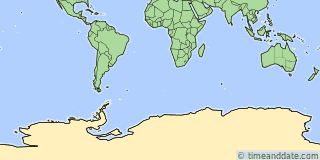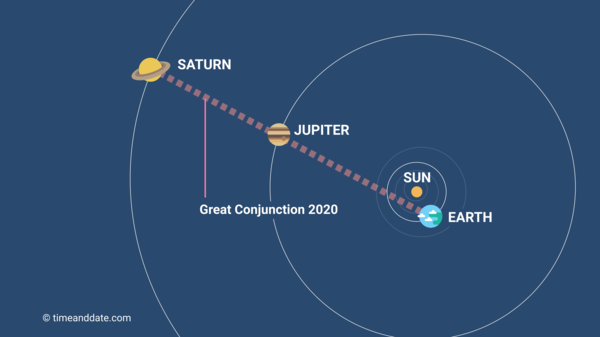All day
Visible tonight, Jun 20 – Jun 21, 2024
| Mars: | ↓ Thu 12:37 pm | ↑ Fri 6:18 am |
|---|---|---|
| Saturn: | ↓ Thu 1:48 pm | ↑ Thu 11:03 pm |
| Uranus: | ↑ Fri 10:03 am | ↓ Fri 10:59 am |
| Neptune: | ↓ Thu 1:26 pm | ↑ Fri 12:41 am |

Equal Day and Night at the Solstice?
Depending on your latitude, June 20 is either the longest or shortest day of 2024. For locations at 2.1 degrees south it is also the equilux, where day and night are equal.
Our Interactive Night Sky Map simulates the sky above Austin Peak. The Moon and planets have been enlarged slightly for clarity. On mobile devices, tap to steer the map by pointing your device at the sky. Need some help?
Tonight's Sky in Austin Peak, Jun 20 – Jun 21, 2024 (4 planets visible)
Mars rise and set in Austin Peak
Up some of the night.
Mars is visible more than 6 hours during the polar night. It is quite close to the horizon, making it fainter because the light has to cover a larger distance when traveling through the Earth's atmosphere. Make sure to get an unobstructed view.
Thu, Jun 20 ↓12:37 pm
Fri, Jun 21 ↑6:18 am
Time:
Altitude: °
Direction: °
Saturn rise and set in Austin Peak
Up some of the night.
Saturn is visible more than 14 hours during the polar night.
Thu, Jun 20 ↓1:48 pm
Thu, Jun 20 ↑11:03 pm
Time:
Altitude: °
Direction: °
Uranus rise and set in Austin Peak
Up some of the night. Bring binoculars (but don't look at the Sun!).
Uranus is visible for a short time during the polar night. It is very close to the horizon, making it fainter because the light has to cover a larger distance when traveling through the Earth's atmosphere. Make sure to get an unobstructed view with as little light pollution as possible. You may need binoculars, but only use them when sun is down.
Fri, Jun 21 ↑10:03 am
Fri, Jun 21 ↓10:59 am
Time:
Altitude: °
Direction: °
Neptune rise and set in Austin Peak
Up some of the night. Use binoculars.
Neptune is visible more than 12 hours during the polar night. Very faint, use binoculars.
Thu, Jun 20 ↓1:26 pm
Fri, Jun 21 ↑12:41 am
Time:
Altitude: °
Direction: °
Planets Visible in Austin Peak
| Planetrise/Planetset, Thu, Jun 20, 2024 | ||||
|---|---|---|---|---|
| Planet | Rise | Set | Meridian | Comment |
| Mercury | Down all day | Thu 1:28 pm | Down all night, not visible | |
| Venus | Down all day | Thu 1:18 pm | Down all night, not visible | |
| Mars | Thu 6:15 am | Thu 12:37 pm | Thu 9:27 am | Slightly difficult to see |
| Jupiter | Down all day | Thu 11:19 am | Down all night, not visible | |
| Saturn | Wed 11:07 pm | Thu 1:48 pm | Thu 6:28 am | Fairly good visibility |
| Uranus | Fri 10:03 am | Fri 10:59 am | Fri 10:31 am | Extremely difficult to see |
| Neptune | Thu 12:44 am | Thu 1:26 pm | Thu 7:05 am | Difficult to see |









